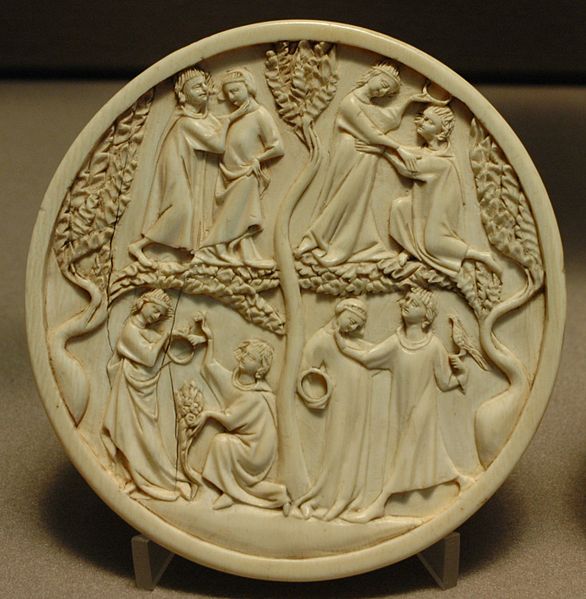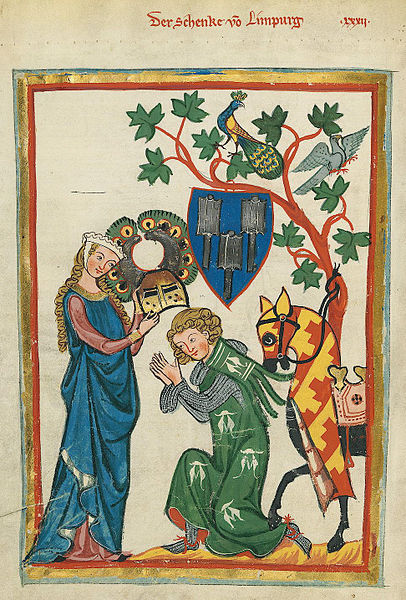Courtly love was a medieval European literary conception of love that emphasized nobility and chivalry. Medieval literature is filled with examples of knights setting out on adventures and performing various deeds or services for ladies because of their "courtly love". This kind of love was originally a literary fiction created for the entertainment of the nobility, but as time passed, these ideas about love spread to popular culture and attracted a larger literate audience. In the high Middle Ages, a "game of love" developed around these ideas as a set of social practices. "Loving nobly" was considered to be an enriching and improving practice.
God Speed! by Edmund Blair Leighton, 1900: a late Victorian view of a lady giving a favor to a knight about to go into battle
Warfare imagery: the Siege of the Castle of Love on an ivory mirror-back, possibly Paris, ca. 1350–1370 (Musée du Louvre)
Courtly vignettes on an ivory mirror-case, first third of the 14th century (Musée du Louvre)
Chivalry, or the chivalric language, is an informal and varying code of conduct developed in Europe between 1170 and 1220. It is associated with the medieval Christian institution of knighthood, with knights being members of various chivalric orders; knights' and gentlemen's behaviours were governed by chivalrous social codes. The ideals of chivalry were popularized in medieval literature, particularly the literary cycles known as the Matter of France, relating to the legendary companions of Charlemagne and his men-at-arms, the paladins, and the Matter of Britain, informed by Geoffrey of Monmouth's Historia Regum Britanniae, written in the 1130s, which popularized the legend of King Arthur and his knights of the Round Table.
Konrad von Limpurg as a knight being armed by his lady in the Codex Manesse (early 14th century)
God Speed by English artist Edmund Leighton, 1900: depicting an armoured knight departing for war and leaving his beloved
Reconstruction of a Roman cavalryman (eques)
Knights of Christ by Jan van Eyck






